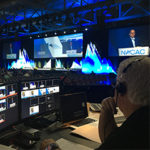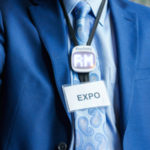Joe Colangelo is CEO of Bear Analytics, a Washington, D.C.-based data-analysis company that focuses on event organizers, associations, and nonprofits. He shared three ways that companies — no matter what their size — can build a strong foundation for successfully collecting and analyzing event data.
1. Create a data inventory. We often hear, “This all sounds great, but we’re not collecting any data,” Colangelo said. “The client may be organizing 15 events a year where data is collected through registration, via event apps, and by sponsors, and [they] may not possess the data only in the sense that it’s not on their own servers — it’s on their partners’ servers,” he said.
So the first thing to determine is: Where is your data? Where has it historically been stored? As you start to ask these questions around events, you may realize how much information your partners hold. That can be risky, he said. “Your partners are in the service business, not the data-storage business,” Colangelo said. “So we encourage our clients to find out how long your vendors — registration vendors, conference-app providers, your publications — are going to hold your data. Sometimes it’s as little as six to 18 months.”
2. Share your data within your organization. Don’t let your data discussions be limited to just a few senior people. “Sometimes I find that a lot of senior folks want to feel like they’re on the ‘inside,'” and not want to share data with other staff, Colangelo said. “And senior staff may ask the basic questions, like how many attendees were member or non-member? How many were domestic versus international? That’s a great place to start, but those are broad, broad categories.”
But the more junior people — those “who are answering customer calls, the folks that are the face to your clients because they’re interfacing with them on a daily basis when they have problems or issues — probably are the ones that are better in tune with where your event is heading than senior staff.”
3. Safely centralize your data. The downside of getting more staff involved with data “is they’re going to make errors,” Colangelo said. “I always advocate a double copy. Put one copy in a public place, on an internal kind of company server. Put one or two people in charge of collecting it and putting it in there and maintaining it. And then take exact copies of that raw data — always raw data, because it tells every story. It’s like a stem cell.
“And that’s your master,” Colangelo said. “There’s a backup, in case somebody accidentally hits delete.”



